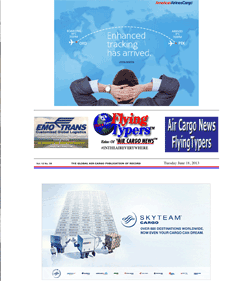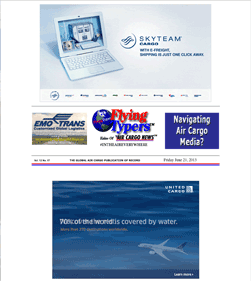 |
 |
|
| |
||
|
Vol. 12 No. 59 THE GLOBAL AIR CARGO PUBLICATION OF RECORD Saturday June 29, 2013 |
 
|
|
|
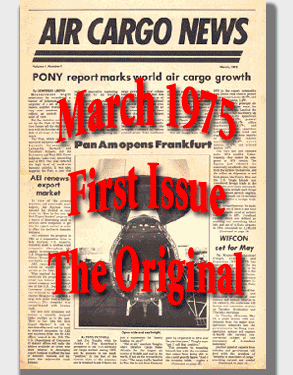 |
|
|
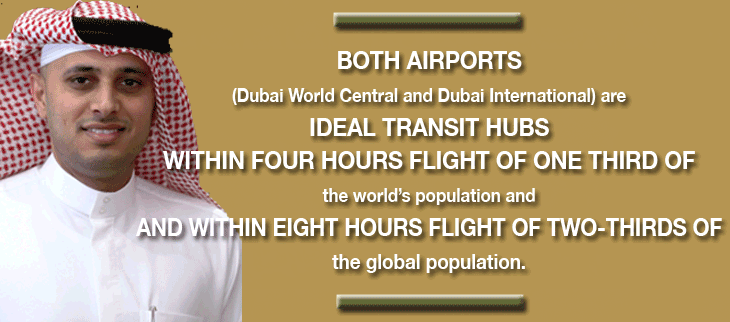 |
“In
general, liberalized markets,
economic growth, increasing
numbers of direct flights, and
lower costs will benefit all
Middle Eastern cargo markets,
including Dubai,” said
Ali Angizeh, VP Cargo &
Logistics at DA.
“Cargo
volumes at Dubai International
have rebounded in recent months,
but it may be too early to say
to what extent this will be
sustained in the short term
given the fact that economic
growth around the world remains
patchy and uneven. Meanwhile,
Dubai World Central continues
to show strong growth as more
airlines begin to operate from
the airport.”
Growth
at Dubai Airports will be spurred
by significant investment in
new facilities.
“In
terms of Dubai Airports’
$7.8 billion SP2020 expansion
plan, we expect freight volumes
to rise an average 6.7 percent
per year to reach 4.1 million
tons by 2020 at Dubai International
and Dubai World Central together,”
he said.
“That
is almost double the 2.2 million
tons we recorded in 2010. Accordingly,
we are investing in new facilities
to accommodate that amount of
freight by 2020 and ensure that
our development stays ahead
of demand.”
At
Dubai World Central the current
capacity of 250,000 tons per
annum will expand to accommodate
600,000 tons by 2020, while
construction has already begun
on a 30,000m2 addition to Dubai
International’s 1.2 million
ton capacity Cargo Mega Terminal
(CMT), increasing capacity by
25 percent to 1.5 million tons
a year. Dubai International’s
original cargo facilities, Hall
A and Freight Gate 1, located
adjacent to the CMT, will also
undergo a complete refurbishment.
Together these facilities will
be dedicated for the sole use
of Emirates.
Meanwhile,
a new transshipment facility
with capacity for 400,000 tons
of freight a year is also under
construction. Once complete,
it will handle about 60 percent
of cargo transferred between
Dubai International and Dubai
World Central.
The
import and export of pharmaceutical
products is one key growing
market for DIA. “With
this in mind, Dubai Airports
will also be investing in dedicated
cold rooms and handling areas
for pharma products as part
of the expansion of the cargo
facilities at the airport,”
said Angizeh.
Dubai’s
success as a hub has been built
on its geocentric location at
the crossroads between East
and West, allowing both Dubai
International and Dubai World
Central to tap into global trade
flows.
“Both
airports are ideal transit hubs
within four hours flight of
one third of the world’s
population and eight hours flight
within two-thirds of the global
population,” he said.
“The
fundamentals are in place to
ensure strong growth at both
Dubai Airports’ airports.
Freight volumes at Dubai International
will continue to benefit from
the growth of Emirates airline’s
global network. This includes
additional belly cargo from
passenger flights as well as
new dedicated freight services.”
However,
the most dynamic growth in cargo
is expected to take place at
Dubai World Central as freight
airlines take advantage of the
operational flexibility possible
with ample capacity and the
easy availability of arrival
and departure slots. During
2012, more than 30 airlines
operated into Dubai World Central,
predominantly as cargo charter
operations. Of these, 15 were
scheduled services. More new
airlines are anticipated to
sign up to use the airport in
the near future.
“This
has driven Dubai World Central’s
growth in the past few years,
with the airport handling 219,092
tons of air freight in 2012—its
second full calendar year of
operations—an increase
of 144 percent over 2011, its
first full year of operations.”
Sky
King
Get
On Board Air Cargo News
FlyingTypers |
|
If
You Missed Any Of The Previous
3 Issues Of FlyingTypers |
|||||
|
|||||
FT061813 |
FT062613 |
||||
|---|---|---|---|---|---|


 lyingTypers
recently
had a long chat with Andrew
Herdman, the Kuala Lumpur-based
Director General of the Association
of Asia Pacific Airlines.
lyingTypers
recently
had a long chat with Andrew
Herdman, the Kuala Lumpur-based
Director General of the Association
of Asia Pacific Airlines.


 t
was the Umbrellas of Munich
last month during Air Cargo
Europe, as almost constant
rains contributed to the worst
soaking in Germany since the
17th century. But not even
the rains could put a damper
on the first worldwide sales
meeting of ATC; the GSSA recently
expanded its reach into USA
through acquisition of Platinum
Air Cargo.
t
was the Umbrellas of Munich
last month during Air Cargo
Europe, as almost constant
rains contributed to the worst
soaking in Germany since the
17th century. But not even
the rains could put a damper
on the first worldwide sales
meeting of ATC; the GSSA recently
expanded its reach into USA
through acquisition of Platinum
Air Cargo.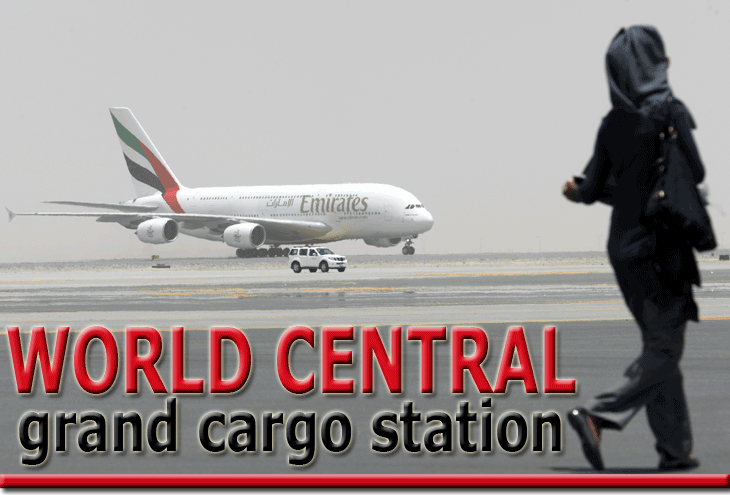
 resh
from Dubai International confirmation
as the world’s second
busiest airport for international
passenger traffic—moving
ahead of Paris’ Charles
de Gaulle airport for the first
time—DIA’s operator,
Dubai Airports, is also seeking
a similarly commanding position
in air cargo.
resh
from Dubai International confirmation
as the world’s second
busiest airport for international
passenger traffic—moving
ahead of Paris’ Charles
de Gaulle airport for the first
time—DIA’s operator,
Dubai Airports, is also seeking
a similarly commanding position
in air cargo. Jacques
Nijankin has joined the international
freight forwarding company Senator
International.
Jacques
Nijankin has joined the international
freight forwarding company Senator
International. “This cargo
handling agreement with Virgin
Atlantic at New York-JFK and
Boston represents another facet
of the expanding relationship
between our two airlines,”
said Tony Charaf, Senior Vice
President and Chief Cargo Officer
for Delta Cargo, as VS signed
a multi-year cargo handling
agreement. The
agreement states Delta Cargo
will provide cargo handling
for Virgin Atlantic at New York’s
John F. Kennedy International
Airport and Boston’s Logan
International Airport, effective
Aug. 26, 2013, and July 15,
2013, respectively.
“This cargo
handling agreement with Virgin
Atlantic at New York-JFK and
Boston represents another facet
of the expanding relationship
between our two airlines,”
said Tony Charaf, Senior Vice
President and Chief Cargo Officer
for Delta Cargo, as VS signed
a multi-year cargo handling
agreement. The
agreement states Delta Cargo
will provide cargo handling
for Virgin Atlantic at New York’s
John F. Kennedy International
Airport and Boston’s Logan
International Airport, effective
Aug. 26, 2013, and July 15,
2013, respectively.

 Dear
Geoffrey,
Dear
Geoffrey, 